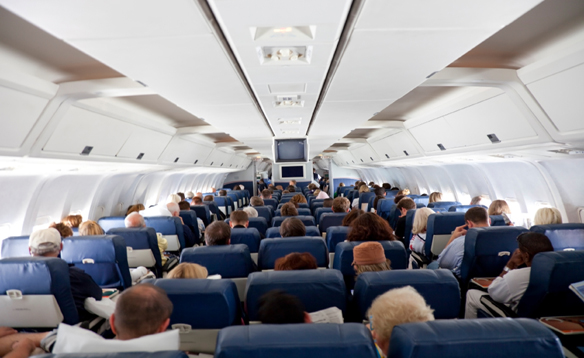If you thought you could get away without buying your baby a plane seat, think again

For years, everyone from the FAA to the American Academy of Pediatrics has been saying that young children are safest when restrained in a safety seat on board an airplane. They stress they are talking about turbulent skies as much as plane crashes. Of course that means you have to purchase a seat for the baby.
I’ve been urging parents to do this for as long (20 years) as I’ve written my syndicated column Taking the Kids . (More information from the FAA: http://www.faa.gov/passengers/fly_children/crs).
If you need convincing it’s worth the money, consider what happened Tuesday night after United Airlines Flight 967, on its way from Washington to Los Angeles, hit severe turbulence and was diverted to Denver. Twenty-one people were injured. “Everything was flying—people who were not buckled up were injured,” one passenger told CNN.
Would you want that to be your baby who is flying around the plane? One passenger was knocked so hard into the side of the cabin, CNN reported, that she left a crack above the window. Luckily, it appears, no babies or toddlers were taken to the hospital.
A flight attendant once told me that babies are the only thing not required to be strapped in or strapped down for take off and landing. Isn’t it about time that is changed? Yes, you would have to purchase a seat. But honestly, wouldn’t you pay any amount to keep your baby safe? You wouldn’t get in a car without strapping a baby or toddler in a safety seat. Why an airplane?
Turbulence is normal and because it can happen without warning—as was apparently the case Tuesday night—it is always wise to keep your seatbelt buckled. The FAA notes that turbulence is the leading cause of injuries in plane accidents that are not fatal.
Always follow the manufacturer’s instructions when using a CRS. FAA recommends that a child weighing:
- Less than 20 pounds use a rear-facing CRS
- From 20 to 40 pounds use a forward-facing CRS
- More than 40 pounds use an airplane seat belt
While booster seats and harness vests enhance safety in vehicles, FAA prohibits passengers from bringing these types of restraints on airplanes for use during taxi, take-off and landing. If you don’t want to lug your car seat to the gate or your child uses a booster seat in a car, check out www.kidsflysafe.com which offers a grandmother-designed Child Aviation Restraint System, the only harness type child aviation safety restraint ever certified for airplane travel by the Federal Aviation Administration (FAA). The belt and buckle device—which weighs just a pound and fits into a 6-inch stuff sack—is designed for kids 22-44 pounds and creates a safe airplane seat for your child.
I know it isn’t fair that most airlines don’t offer discounts for young children. I know we all want to save as much as we can when we travel. But we can’t put a price on our children’s safety.

